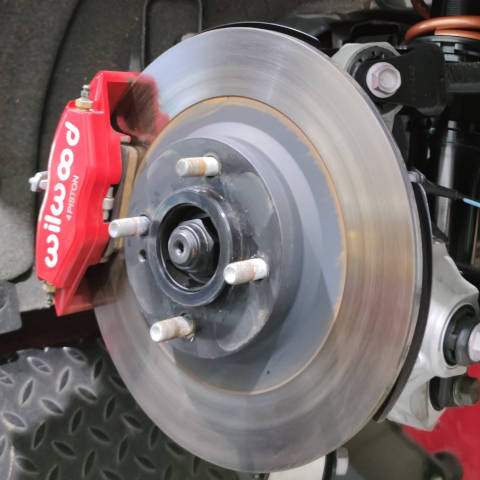Keeping your brake system well maintained is essential to your safety while driving.
Signs of Brake System Issues
Some signs that your brake system may need to be serviced are:
- You hear grinding or squealing noise while braking
- The car vibrates when braking
- Pushing the brake pedal feels soft
- There is a delayed response when you push the brake pedal and the car start braking
- Brakes do not stop the vehicle effectively
Brake System Components
The brake system is composed of multiple parts that work together in unison to make the car stop. Each wheel of the vehicle has a number of components that create friction in order to slow down the car. All the wheels are connected via a hydraulic system to your brake pedal. When you the brake pedal or pull the hand brake, the system engages and stops your car. Below we cover each part of the brake system in more detail.


Disc Brakes: Brake Rotors, Brake Pads, and Brake Calipers
Disc brakes are the most common brake systems. Disc brakes located at the front of the car are responsible for 60% to 80% of the braking power. Disc brakes work by pressing a brake pad against a metallic disc (the brake rotor) to create friction to stop the car. The better quality the brake pads and brake discs, the faster the car will stop and the longer it will take to wear out, but that also means the higher the cost.
Brake pads usually wear out before the brake rotors and will need to be replaced every 2-3 years, while brake rotors will need to be replaced every 3-5 years. But that largely also depends on the quality of the brake parts and more importantly, how you drive. Braking hard and frequently wears out the brake rotors and brake pads much faster.
The brake caliper is the mechanism that presses the brake pads against the metal disc rotor when you push the brake pedal. Brake calipers could last for 7-10 years depending on their quality.
Drum Brakes: Brake Drums, Brake Shoes, and Wheel Cylinders
The brake drums and brake shoes work similar to the way disc brakes work but are not very common any more. The brake drum encloses the brake components in a drum and applies pressure on the brake shoes in an outward direction. Brake drums are commonly used in the rear of the vehicle which is exposed to more dirt and mud. Brake drums are less efficient as less brake power is required in the rear, but because of that drum brakes last slightly longer than disc brakes.
Just like the brake caliper, the wheel cylinder presses the brake shoes against the brake drum, creating friction to stop the car. Wheel cylinders have a similar life span that brake calipers do.
Brake Hydraulics: Brake Lines and Brake Fluid
The brake hydraulics system is what connects all of the individual brake components on each wheel together with the brake pedal via brake lines filled with brake fluid. The brake fluid is under pressure and when you step on the brakes, the pressure is transferred to the brake caliper and/or wheel cylinder where it compresses the brake pads against the brake rotor and/or the brake shoes against the brake drum.
Common issues with the brake hydraulics system are when you push the brake pedal, it feels soft and the car does not brake very well (if at all). There could also be a delayed response between the time you push the brake pedal and when the car starts braking. This is usually because the pressure of the fluid changed or air bubbles were introduced in to the system. This can happen when the brake fluid level falls too low or the brake lines deteriorate over time - this is especially true in our Canadian climate where the temperatures can drop below -40°C and salt is extensively used on the roads during the winter season.
It's important to ensure your brake fluid is always topped off. Also do regular inspections of the brake system so that you can replace this critical part of the system before it fails.
Hand Brake
Hand brakes (also known as parking brake) is mainly used to ensure the car doesn't roll off the street when parked on a slat and can be used in emergencies if the hydraulic brake system were to fail. Hand brakes use a simpler braking system that is similar to what bicycles use. The hand brake (located on the left of the brake pedal on some models) is connected to the wheels via wires. When the hand brake is pulled, the brake pads/drums push against the brake rotors/drums.